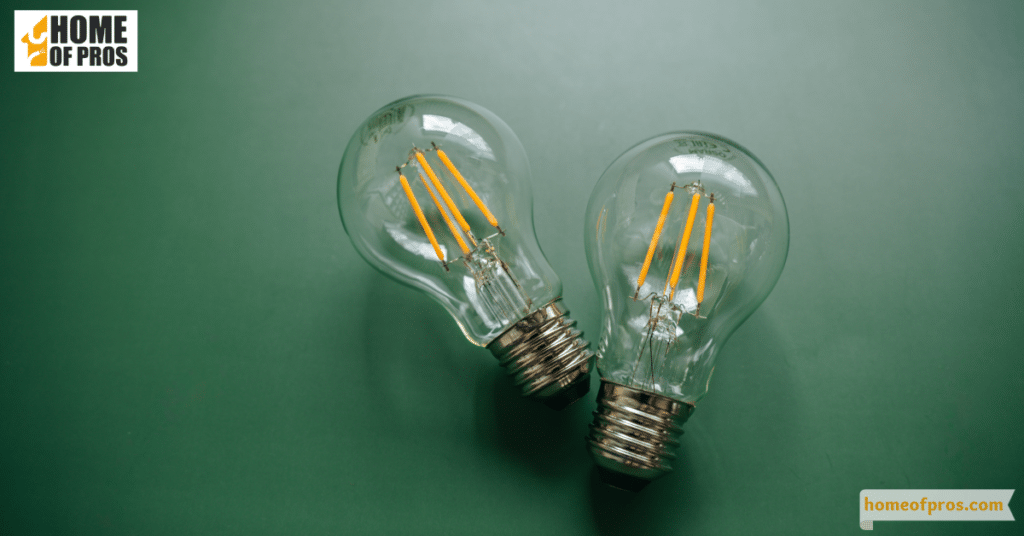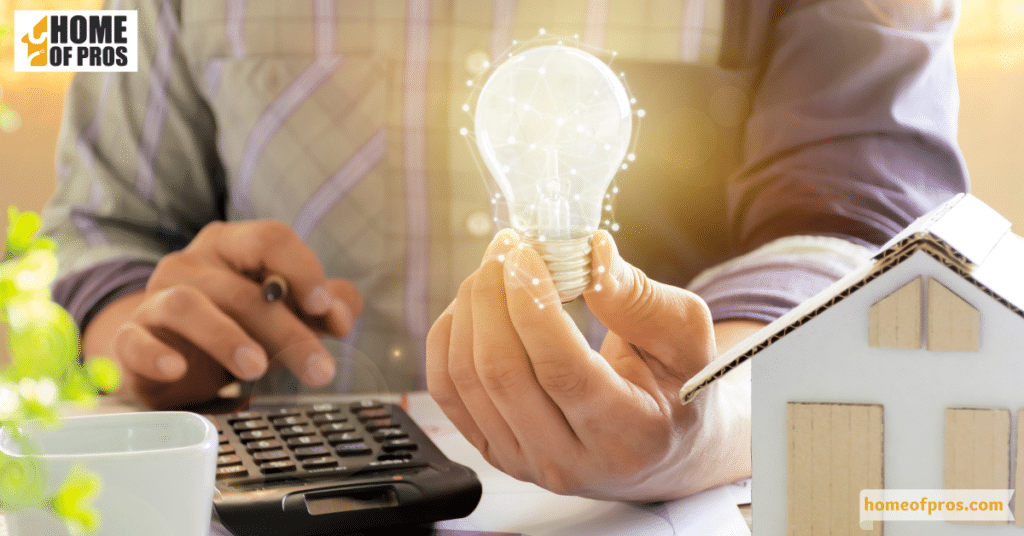Replacing your halogen light bulbs is a simple process that can enhance both your home’s lighting and energy efficiency. Start by turning off the power to the fixture and allowing the existing bulbs to cool. Then, select LED or CFL bulbs as energy-efficient replacements, ensuring they match the wattage and base type of your old halogens. Finally, install the new bulbs carefully, and you’ll enjoy brighter, longer-lasting illumination while saving on energy costs.
When it comes to illuminating our homes, halogen light bulbs have been a familiar presence for decades. Their warm and bright glow has served us well, but it’s time to shed some light on a brighter, more energy-efficient future. In this guide, we’ll embark on a journey to explore the ins and outs of replacing your halogen light bulbs with more sustainable alternatives.

Understanding Halogen Light Bulbs
Halogen light bulbs, frequently chosen for home lighting, operate through the passage of electricity across a tungsten filament housed within a robust quartz or fused silica envelope designed to withstand high temperatures. The filament’s extreme heat generates the distinctive warm and bright light that characterizes halogen bulbs.
In terms of advantages, halogens excel in two key areas. Firstly, they offer exceptional brightness, making them an ideal choice for scenarios requiring intense illumination, such as task lighting or accent lighting. Secondly, halogens possess the ability to render colors with remarkable accuracy, a crucial attribute for tasks where color fidelity is paramount, such as cooking or reading.

Why Replace Halogen Bulbs
Replacing halogen bulbs with more energy-efficient options isn’t just a passing trend; it’s a smart choice for multiple reasons that span energy efficiency, cost savings, and environmental benefits.
1. Energy Efficiency
Halogen bulbs are notorious energy guzzlers. They convert a significant portion of the electricity they consume into heat, not light. This inefficiency results in higher energy bills and an increased carbon footprint. By making the switch to energy-efficient alternatives, you’ll significantly reduce your electricity consumption while maintaining quality lighting.
2. Cost Savings
Lower energy consumption naturally leads to reduced energy bills. Energy-efficient bulbs like LEDs or CFLs may have a higher upfront cost, but their longer lifespan and energy-saving features mean they pay for themselves over time. You’ll not only recoup your initial investment but continue to save on energy costs throughout your lifespan.

3. Environmental Benefits
Halogen bulbs contribute to environmental issues in two ways. First, they require more energy to produce the same amount of light, leading to increased greenhouse gas emissions from power plants. Second, their shorter lifespan results in more frequent disposal, adding to electronic waste. Energy-efficient bulbs, on the other hand, reduce energy consumption and waste, making them a sustainable choice for a greener planet.
4. Regulations and Incentives
Recognizing the environmental impact of inefficient lighting, many countries have implemented regulations to phase out or restrict the use of halogen bulbs. Additionally, numerous incentives, such as rebates and tax credits, encourage consumers to switch to energy-efficient lighting options. These initiatives not only benefit the environment but also provide financial incentives for making the transition.
By replacing halogen bulbs with energy-efficient alternatives, you’re making a positive impact on your wallet and the planet. It’s a win-win choice that aligns with global efforts to reduce energy consumption and combat climate change.

Selecting the Right Replacement Bulbs
Choosing the right replacement bulbs when upgrading from halogen lighting is a crucial step in improving both energy efficiency and illumination quality. In this guide, we’ll explore the various energy-efficient options available, shed light on essential factors to consider during your selection process and provide valuable tips for deciphering product labels and specifications.
Types of -Efficient Bulbs
| Bulb Type | Efficiency | Lifespan | Suitable Applications |
|---|---|---|---|
| LED (Light-Emitting Diode) | Up to 80% less | Up to 25,000 hours | All-purpose lighting |
| CFL (Compact Fluorescent) | Up to 80% less | Up to 10,000 hours | General lighting |
| Halogen Incandescent | Up to 25% less | Varied | Halogen-like quality |
Factors to Consider
When selecting your replacement bulbs, keep these factors in mind:
- Lumens: Match or slightly exceed the lumens of your previous bulbs for consistent brightness.
- Color Temperature: Choose a color temperature (measured in Kelvin) that suits your preferred ambiance (e.g., warm for coziness).
- Compatibility: Ensure the new bulbs fit your fixtures in terms of socket, size, and shape.
- Dimmability: Opt for dimmable bulbs if your fixtures allow dimming.
Selecting the right replacement bulbs is a pivotal decision that can enhance both your lighting quality and energy savings. Armed with this knowledge, you can confidently choose bulbs that illuminate your space efficiently while aligning with your preferences and fixtures.
The Replacement Process
Replacing your halogen bulbs with more energy-efficient alternatives is a straightforward task that can enhance both your lighting quality and sustainability. In this step-by-step guide, we’ll walk you through the process, ensuring a smooth transition.

- Safety First: Before you begin, always prioritize safety. Turn off the power to the fixture you’re working on at the circuit breaker or fuse box. Wait for the existing halogen bulbs to cool down completely to avoid burns.
- Removing the Old Bulbs: Wear gloves to prevent skin oils from damaging the new bulbs. Carefully unscrew the old halogen bulbs counterclockwise from their sockets. If the bulb is stuck, use a dry cloth for better grip, and avoid excessive force. Once removed, inspect the sockets for any signs of damage or corrosion. Clean if necessary.
- Installing the New Bulbs: Ensure the replacement bulbs you’ve chosen are the correct type and wattage for your fixture. Carefully screw the new bulbs clockwise into the sockets. Be gentle to avoid damaging the bulbs. Make sure the bulbs are securely seated but avoid over-tightening, as this can damage the socket or the bulb.
- Testing and Alignment: Turn the power back on at the circuit breaker.
Test the new bulbs to ensure they light up properly. If the bulbs are dim or flickering, turn off the power and recheck the installation. Ensure they are aligned correctly and securely in the sockets.
Benefits and Final Tips
Switching to energy-efficient bulbs isn’t just about better lighting—it brings several advantages to your wallet and the environment. Here’s a quick rundown of the perks, along with some easy-to-follow tips for getting the most out of your new bulbs:
Why Energy-Efficient Bulbs are Awesome:
- Save Money: These bulbs cut your electricity bills, leaving you with more cash for other things.
- Last Longer: They stick around much longer, so you won’t have to replace them as often.
- Eco-Friendly: By using less energy and making less waste, you’re helping Mother Earth.
- Better Lighting: Enjoy brighter, more dependable light in your home.
Tips for Making Your Bulbs Shine:
- Keep ‘Em Clean: Wipe your bulbs with a soft, dry cloth when they’re not on to get rid of dust.
- Use Dimmers Right: If you have dimmable bulbs, use dimmer switches that work with them and avoid going too dim.
- Give ‘Em Space: Make sure there’s enough air around your bulbs, especially if they’re in a tight spot, to prevent overheating.
- Think About Smart Bulbs: Smart bulbs let you control your lights with your phone or voice, plus they save energy.
Useful Resources to Explore:
- Check for Rebates: Your local utility company might offer rebates or discounts on energy-efficient bulbs. It’s like getting a bonus!
- Recycling Programs: When it’s time to say goodbye to old bulbs, look for recycling programs in your area to dispose of them the right way, which is good for the environment.
By switching to energy-efficient lighting and following these easy tips, you’re not only lighting up your life but also helping your budget and our planet. Let your energy-efficient bulbs brighten your home while you save money and energy.

Conclusion
In the journey of replacing your halogen bulbs with energy-efficient alternatives, you’ve illuminated a path to brighter, more sustainable living. The benefits are clear—lower energy bills, longer-lasting bulbs, and a positive impact on the environment. By following the tips provided and exploring available resources, you can make the most of your energy-efficient lighting choices. As you enjoy the brilliance of efficient illumination, you’re not only enhancing your home but also contributing to a more eco-conscious future.












